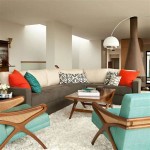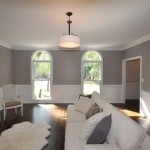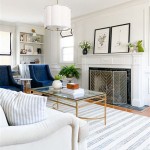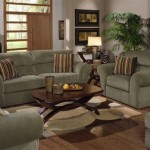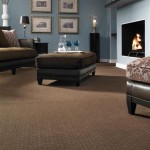Paint Scheme Ideas for Living Rooms
The living room is often considered the heart of the home, a space for gathering, relaxation, and entertainment. Choosing the right paint scheme can significantly impact the overall ambiance and mood of this crucial room. A well-chosen color palette can enhance natural light, create a sense of spaciousness, and reflect your personal style. This article will explore various paint scheme ideas for living rooms, providing guidance on selecting colors that complement your furniture, furnishings, and personal preferences.
Neutrals with Pops of Color
A classic and versatile approach, using neutral colors as a base allows for flexibility in decorating and furniture choices. Opt for neutral tones like white, cream, gray, or beige on the walls. These colors provide a clean backdrop that allows other elements in the room to shine. Introduce pops of color through accent walls, throw pillows, artwork, or rugs. For instance, a calming gray living room can be invigorated with a bright blue accent wall or vibrant red throw pillows. This approach provides a balanced and sophisticated look, while still allowing you to inject personality and vibrancy.
Monochromatic Color Schemes
Monochromatic paint schemes utilize different shades of the same color to create a harmonious and cohesive look. This approach can be particularly effective for creating a sense of tranquility and sophistication. For a sophisticated living room, consider using various shades of gray, from a light dove gray on the main walls to a charcoal gray on an accent wall. The use of different tones adds depth and visual interest without introducing contrasting hues. Other popular monochromatic options include shades of blue, green, or brown, each offering a distinctive feel and ambiance.
Complementary Colors
Complementary colors are positioned opposite each other on the color wheel. These contrasting colors provide a visually stimulating effect, adding energy and dynamism to the space. For instance, pairing a vibrant blue wall with a warm orange sofa or a sunny yellow accent wall with a cool purple rug creates a striking and dynamic contrast. When working with complementary colors, it’s important to balance the intensities of the hues, using one dominant color and the other as accents to prevent the room from feeling too overwhelming.
Analogous Color Schemes
Analogous colors are located next to each other on the color wheel and share a common hue. This creates a harmonious and visually pleasing effect, often associated with nature. Using a combination of green, blue, and yellow, for instance, can evoke a sense of peace and tranquility, reminiscent of a serene landscape. Analogous color schemes are ideal for creating a calming and inviting ambiance in the living room. You can choose a dominant color and use the others as accents to add depth and variation.
Warm and Cool Color Schemes
Warm colors, like reds, yellows, and oranges, exude warmth, energy, and a sense of vibrancy. Cool colors, such as blues, greens, and purples, emanate a feeling of calmness, serenity, and sophistication. When creating a paint scheme, consider the overall mood you hope to evoke. Warm colors can make a room feel cozy and inviting, while cool colors can create a sense of spaciousness and tranquility. You can create a balanced space by incorporating a combination of warm and cool tones, for instance, by using a warm orange accent wall with cool blue furniture.
The Impact of Lighting
The amount and type of natural and artificial light in a living room can significantly influence how paint colors appear. Natural light tends to make colors appear brighter and more vibrant, while artificial light can cast a warmer or cooler hue. Consider the amount of natural light the room receives throughout the day when selecting your paint colors. Rooms with limited natural light may benefit from lighter, brighter colors to open up the space, while rooms with abundant natural light can handle richer, darker hues.
Experimenting with Samples
Before committing to a specific paint scheme, test out your color choices on sample boards or directly on the walls. Observe how the colors look in different lighting conditions throughout the day. This process will help you determine the perfect color combination for your living room. Once you’ve found the ideal colors, you can proceed with painting the room, ensuring that your chosen paint scheme complements your personal style and creates a beautiful and welcoming space for relaxation and enjoyment.

25 Best Living Room Color Scheme Ideas And Inspiration Palette Schemes Colors

25 Best Living Room Color Scheme Ideas And Inspiration Palette Schemes Front Decor

Blue Living Room Design Ideas For Your Home Designcafe

50 Best Living Room Paint Colors Top From Designers

30 Best Living Room Color Schemes Stag Manor

11 Cozy Living Room Color Schemes To Make Harmony In Your Purple Design Combination

30 Elegant Living Room Colour Schemes Renoguide N Renovation Ideas And Inspiration

17 Living Room Color Palettes Our Designers Love Havenly Interior Design Blog

The Most Popular Living Room Colours For 2024

The Most Popular Living Room Colours For 2024


